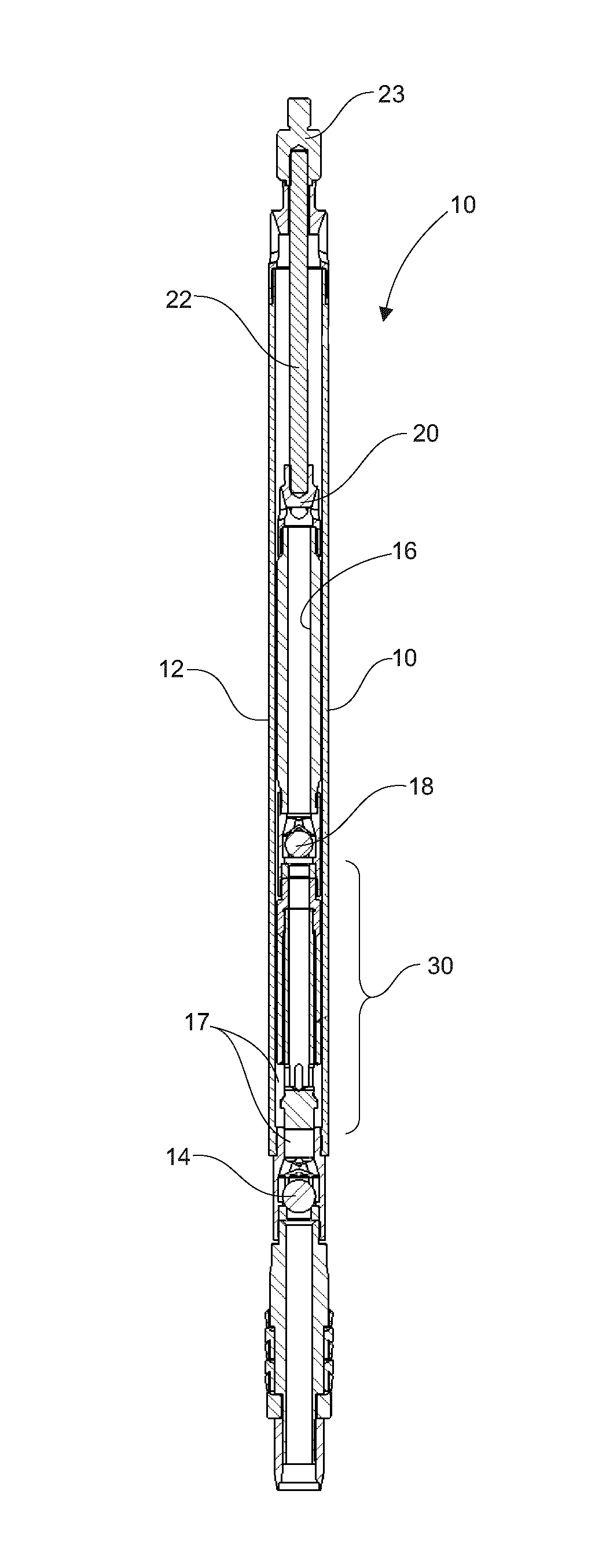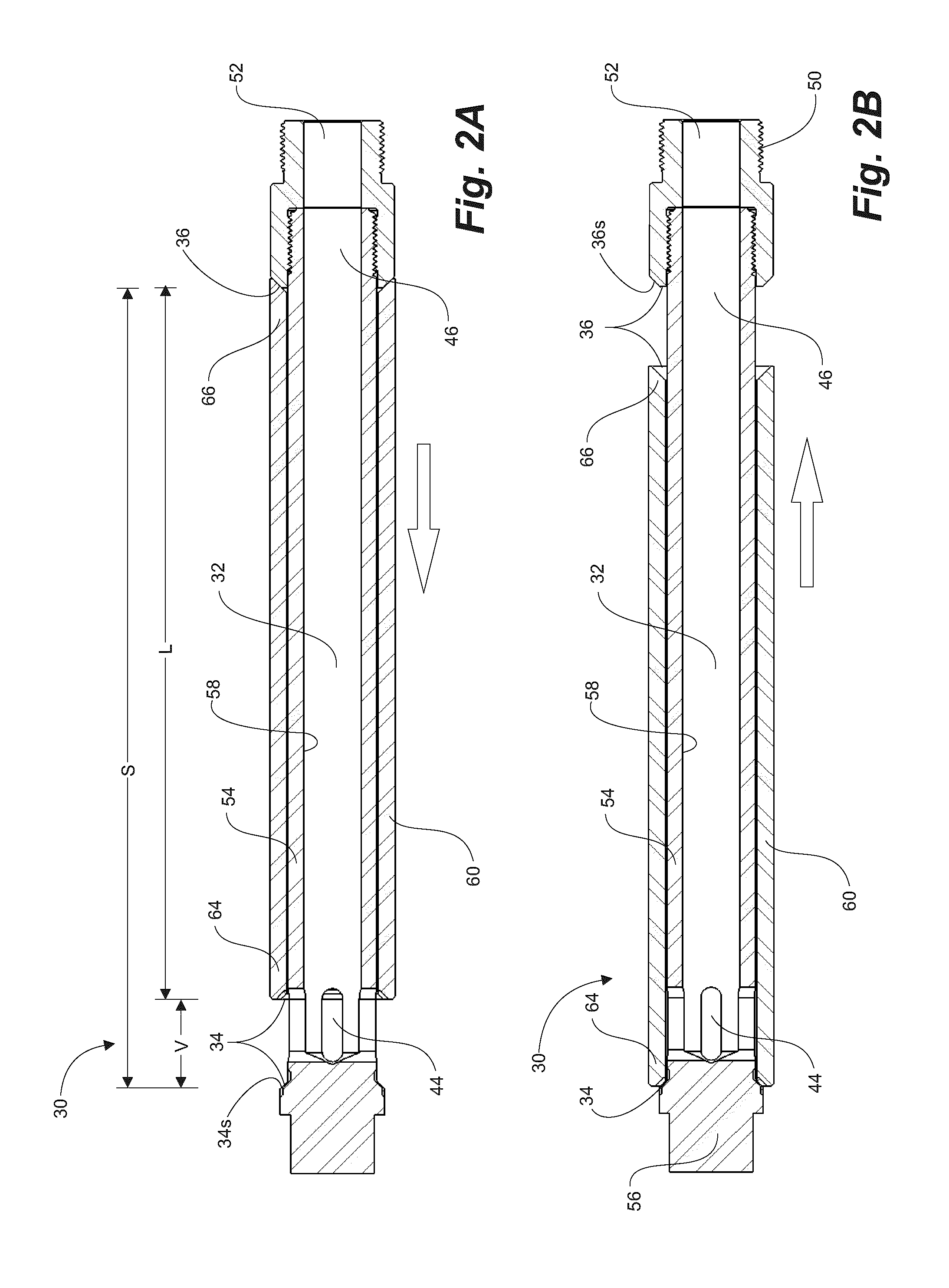Anti-gas lock valve for a reciprocating downhole pump
a technology of anti-gas lock valve and pump, which is applied in the direction of mechanical equipment, liquid fuel engines, fluid removal, etc., can solve the problems of reducing efficiency, reducing and increasing the lifting cost of liquid to the surface, so as to improve the efficiency of the pump and reduce maintenance costs , the effect of increasing production
- Summary
- Abstract
- Description
- Claims
- Application Information
AI Technical Summary
Benefits of technology
Problems solved by technology
Method used
Image
Examples
Embodiment Construction
[0041]With reference to FIGS. 1A, 1B and 1C, a typical reciprocating plunger pump 10 comprises a barrel 12, typically about 20 feet in length, fluidly connected to the bore of a tubing string (not shown) extending from a hydrocarbon formation and uphole to surface, the barrel 12 having a standing valve 14 at a bottom or downhole end. A plunger 16, in the order of about four or five feet in length, has a travelling valve 18 at a downhole end thereof. As is conventional, the pump 10 is secured in the tubing string with either or both a top or bottom hold-down 19 between the pump 10 and a seating nipple in the tubing string. Further, the hold-down 19 seals the pump 10 within the tubing string.
[0042]Simply, a fluid pump has barrel 12 and the plunger 16 within that reciprocates uphole on an upstroke to draw a charge of fluid from the formation into a pump chamber 17, to charge the pump barrel 12 with fluid, and downhole on a downstroke to transfer the fluid into the hollow plunger 16 for...
PUM
 Login to View More
Login to View More Abstract
Description
Claims
Application Information
 Login to View More
Login to View More - R&D
- Intellectual Property
- Life Sciences
- Materials
- Tech Scout
- Unparalleled Data Quality
- Higher Quality Content
- 60% Fewer Hallucinations
Browse by: Latest US Patents, China's latest patents, Technical Efficacy Thesaurus, Application Domain, Technology Topic, Popular Technical Reports.
© 2025 PatSnap. All rights reserved.Legal|Privacy policy|Modern Slavery Act Transparency Statement|Sitemap|About US| Contact US: help@patsnap.com



